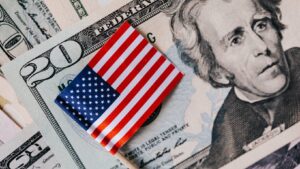In the ever-evolving world of finance, it’s crucial to stay informed about the latest economic trends. The United States, as the world’s largest economy, often sets the pace for these trends. This article dives into the fascinating world of US economic trends, shedding light on the patterns that shape the global financial landscape.
US Economic Trends
 Diving deeper into the realm of economics, it’s crucial to grasp the nuances that shape the US economy and interpret critical economic indicators. A thorough understanding of these factors makes one adept in spotting imminent fluctuation in the economic landscape.
Diving deeper into the realm of economics, it’s crucial to grasp the nuances that shape the US economy and interpret critical economic indicators. A thorough understanding of these factors makes one adept in spotting imminent fluctuation in the economic landscape.
The US economy trends thrives on its unique blend of various key components. The primary ones include Consumer Spending, Business Investments, Government Expenditures, and Net Exports. Consumer Spending, for instance, accounts for nearly 70% of the US economic activity, making it the largest contributor. Consumers purchase a myriad of goods and services, rendering this sector a heartbeat of the economy.
Business Investments, another critical component, drive the economy’s growth potential. Investments in buildings, machinery, and technology fortify the economic foundation and foster innovation.
US Economic Trends in Global Context
 The US, with its robust economy, plays a significant role in the global market. It is the largest consumer market in the world and hence, impacts international trade significantly. Exemplifying this, a rise in US consumer spending boosts global production as countries strive to meet this heightened demand, signifying a robust global economy. Conversely, any economic downturn in the US can trigger a slowdown in world economies, demonstrating the interconnectedness of the global market.
The US, with its robust economy, plays a significant role in the global market. It is the largest consumer market in the world and hence, impacts international trade significantly. Exemplifying this, a rise in US consumer spending boosts global production as countries strive to meet this heightened demand, signifying a robust global economy. Conversely, any economic downturn in the US can trigger a slowdown in world economies, demonstrating the interconnectedness of the global market.
Just as the US economy impacts global economic trends, it’s also influenced by them. Looking at the 2008 recession, global economic instability exacerbated economic challenges within the US. In contrast, during periods of global economic strength, such as the boom witnessed during the early 2000s, the US economy generally sees improvements in economic indicators like GDP and lower unemployment rates. The many economic ties between countries underline the international nature of modern economies, reinforcing that the global economic climate is an important consideration for understanding US economic trends.
Predicting Future US Economic Trends
Tools for Economic Forecasting
Economic forecasting tools play a substantial role in discerning potential shifts in the US economy. Economist utilize these tools to interpret statistical data, simplifying the vast economic landscape into comprehensible information.
- Leading indicators: These predict changes in the economy before they occur, offering a forward-looking view. Examples include stock market performance, building permits, and consumer expectations.
- Lagging indicators: These indicate economic changes after they’ve happened, providing a retrospective analysis. Examples encompass corporate profits, labor cost per unit of output, and commercial loans.
- Coincident indicators: These mirror the current state of the economy, granting real-time perspectives. Examples range from industrial production to personal income to retail sales.
Factors Possibly Influencing Future Trends
In attempting to forecast upcoming trends in the US economy, several influential factors come into play.
- Fiscal and Monetary Policies: Policies conceived by the Federal Reserve and the government can induce significant changes in the economy. Decisions regarding interest rates or government spending, for instance, can alter economic trajectories. The Federal Reserve’s recent shift towards a flexible average inflation targeting strategy impacts future inflation forecasts.
- International Trade Policies: The fluidity of international trade, dictated by policies and agreements, greatly impacts economic trends. For example, trade wars and tariffs can decelerate economic growth, contributing to possible recessions. Conversely, favorable trade agreements could incentivize economic expansion.
- Technological Advancements: Breakthroughs in technology, including artificial intelligence and machine learning, can transform the economy. They can foster increased productivity, streamline businesses, and catalyze job creation in new sectors.
Economical Trends
Navigating US economic trends isn’t just about understanding the past. It’s about leveraging that knowledge to anticipate the future. The role of economic indicators such as GDP, inflation, and the unemployment rate can’t be overstated. They’re key in interpreting the health and direction of the economy. Equally significant are the global implications of these trends.

